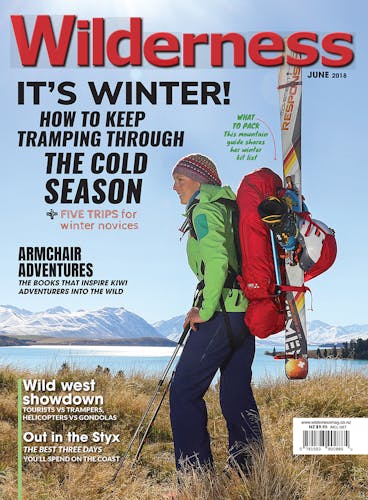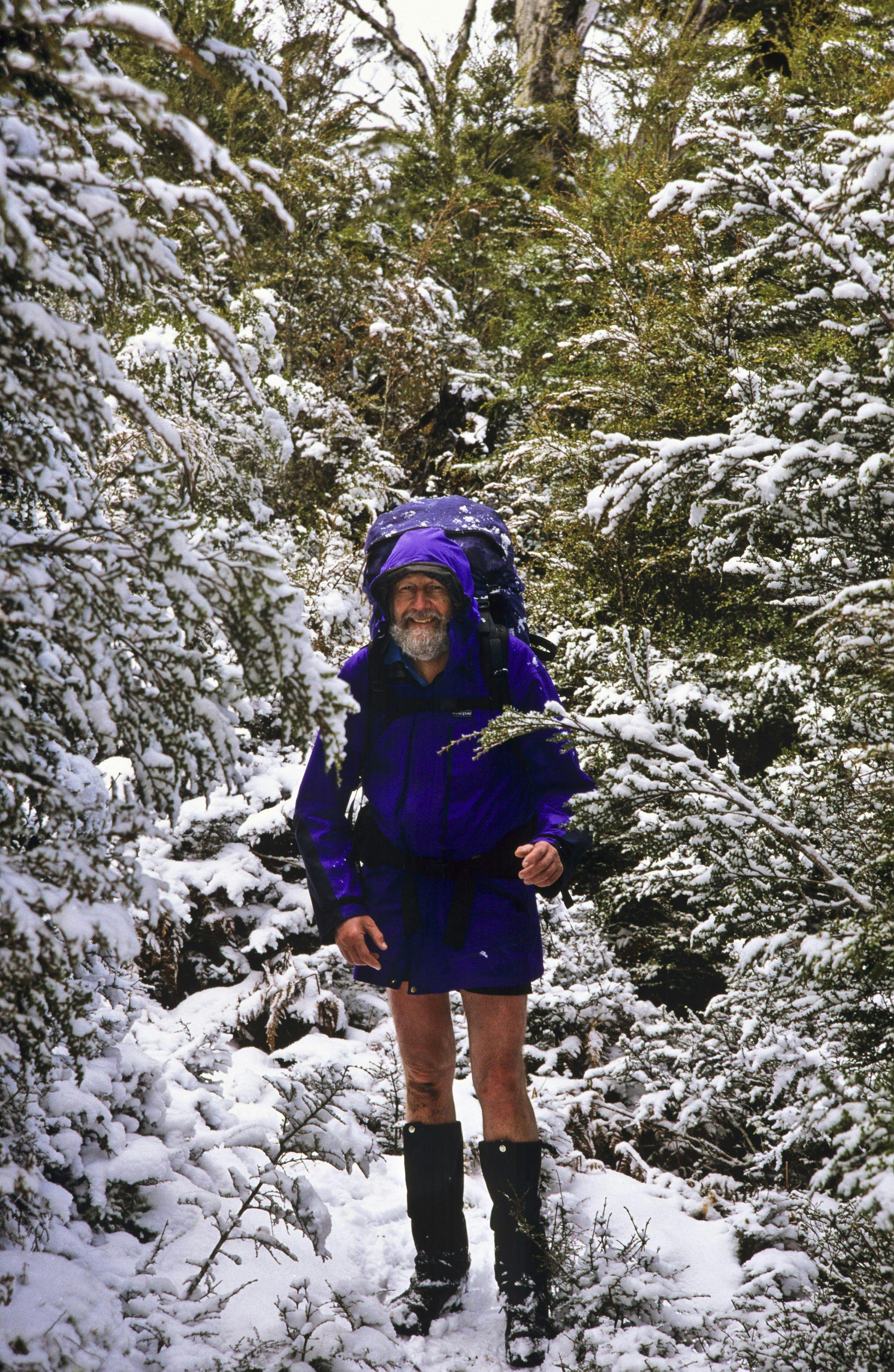Twenty years of tramping with ranger Bruce Postill
Shifting to a new city is never easy, especially when you’re a tramper and the city is Hamilton. In 1993, I’d been living on the West Coast when I landed a job working for the Department of Conservation in the Waikato Conservancy.
Bruce Postill was the field centre manager for the Hamilton area and he took me under his wing, arranged a flat for me, gave me some of his furniture, and provided encouragement as I started my first full-time job.
It wasn’t long before we began tramping together – something we’ve been doing now for 24 years, usually an annual trip, despite the fact we’ve lived in different cities since I left Hamilton in 1997.
Mostly our trips last three to five days, usually on tracks, but there’s always a river or two that provides some off-track challenge. For a while, we seemed to specialise in wading down cold rivers in the depths of winter, often spending the last few hours in the dark. The last occasion was in the Te Hoe gorge in Whirinaki Forest Park, where my trip planning came under closer scrutiny. We’ve had some great experiences: staying in the historic Old Manson Hut in the Kawekas, making our way over Ngapuketurua in the Kaimanawa Range in freshly-fallen snow; traversing the high tussocklands of Otago’s Motatapu Track, and meeting Whakahoro farmer Dan Steele who let us camp on his land and visit the station’s historic huts.
Bruce has several qualities that mark him out as a fine companion; not the least being able to tell a good anecdote. Having worked as a ranger in various places, there’s never any shortage of stories.
When negotiating with iwi for a track up Kakepuku, a volcanic remnant in the same chain that includes Pirongia and Karioi, Bruce met with an important kaumatua based in Auckland. During the meeting, the Maori elder talked extensively about his family connections to Kakepuku. “When finished, he pointed to me and said ‘and you?’,” Bruce recalls. “I said my name came from ‘Postilion’, meaning the person that rides the front horse on the Queen’s coach, so pretty close to royalty. The elder replied, ‘That’s right; there are only two horse’s arseholes between you and the Queen’.”
Such anecdotes flow out of Bruce on a tramp.
He began his outdoor career as a teenager in Sydney, Australia, when he joined the Coast and Mountain Walkers. Later, with the Sydney Rock Climbers, he became heavily involved in climbing and canyoning in the Blue Mountains, as well as big trips in Tasmania’s then little-explored south-west. He quickly became a ropes expert and was involved in technical cliff rescues, for which he received a lifetime achievement award from the Bushwalkers Wilderness Rescue. After moving to New Zealand in 1973, he became a staff mountaineer at Aoraki/Mt Cook National Park, where a core part of his job was alpine rescue.
In 1976, Bruce shifted to St Arnaud, where he and chief ranger George Lyon, with others, built the second John Tait Hut, which although modified, is still the same one used by trampers today.
This was followed by a stint as ranger in charge at Fox Glacier between 1981 and 1987. One of his jobs there was to arrange the relocation of McCormack Hut, which was rapidly being over-taken by the then advancing Franz Josef Glacier.
After shifting to Hamilton to work for the newly formed DOC in 1987, Bruce found himself involved in more hut work. In the late 1980s, his staff converted the original shelter on Mt Pirongia into an eight-bunk hut. More recently he was again involved with the construction of a larger hut at the same site.
Bruce’s instincts about what makes a good track has paid dividends in the Hakarimata Range near Ngaruawahia, where one of the first official walkways was established in the early 1970s. During Bruce’s time as a ranger in the late 1980s and 1990s, he’d seen the walkway deteriorate and use of it plummet. So he became the main architect behind an upgraded Hakarimata Summit Track, which now attracts more than 100,000 walkers a year – making it the Waikato’s most popular track.
“Some locals say it is the best thing to happen to people’s health in Ngaruawahia,” Bruce says. “You see overweight locals making their way up, and not getting to the top first time, but returning again and again.”
At night, in the hut or camp, Bruce never fails to pull something interesting out of his pack. First, it’s plastic film canisters, numbered for each person on the trip. Then there’s a flask of something to pour into these makeshift shot glasses: a whisky liquor like Drambuie, or Cointreau. There’s nothing like a wee dram to polish off the day’s tramping.
Bruce has stepped back from recreational management for his current role as biodiversity ranger, which neatly meshes with his interest in wading birds.
“I don’t know when you get too old for this sort of stuff,” he says.








